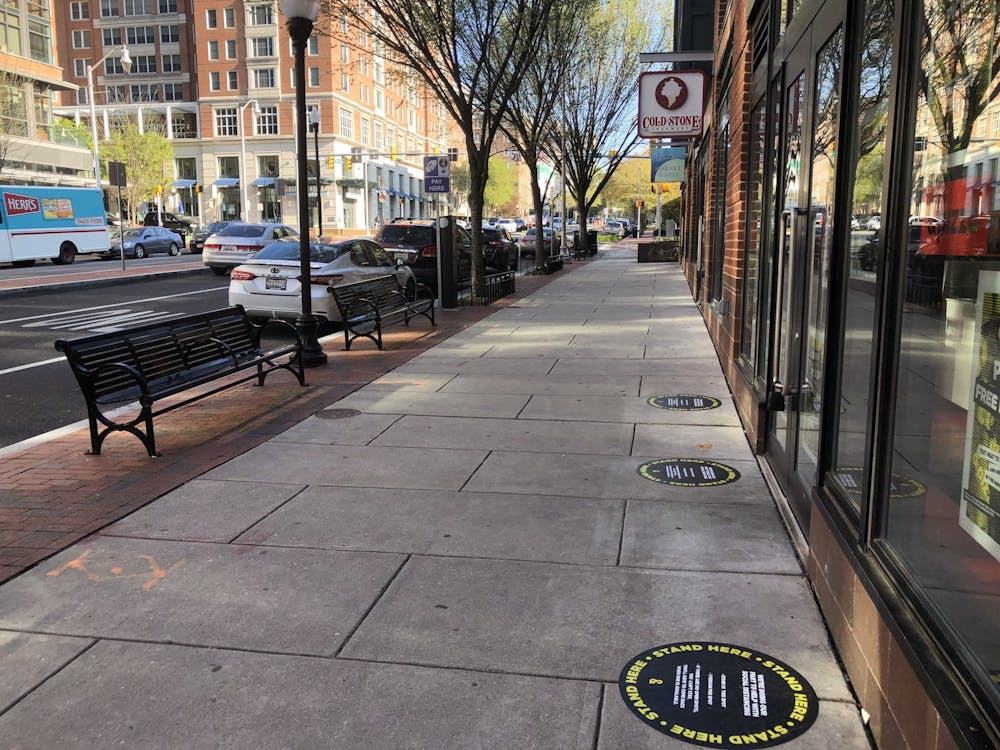Maryland Governor Larry Hogan announced on Wednesday, April 15 that in response to the ongoing coronavirus (COVID-19) pandemic, residents must wear face coverings when using public transportation or inside retail establishments, such as grocery stores. This executive order enters into effect on Saturday, April 18 at 7 a.m.
Junior Diego Tanton, currently residing in Charles Village, reacted to this update in an interview with The News-Letter.
“Part of me is taken aback by the announcement because this means I have to figure out how to make a mask,” he said. “But I realize that this is something that’s good for the health of the community. It is only a small sacrifice that I have to make.”
In a press conference, Hogan confirmed that bandanas and homemade masks will meet these new requirements. The public is asked to reserve medical-grade masks for frontline workers and other vulnerable groups. He added that all stores must try to sanitize their shopping carts and baskets in between customers, or provide customers with a way to do this themselves. Additionally, all retail and food services must allow employees to wash their hands every 30 minutes and enforce social distancing protocols for customers in line.
That same morning, Baltimore Mayor Bernard “Jack” Young issued an executive order encouraging residents to wear cloth face coverings when interacting with others.
Although freshman Breanna Soldatelli, who lives in Hebron, Md., supports Hogan’s decision, she argued that residents should have been required to take these precautions earlier. Currently, there are over 10,000 confirmed cases of COVID-19 and at least 400 deaths in Maryland. Soldatelli’s own mother, she explained, has been wearing masks and gloves as a preventative measure since late January, when the World Health Organization declared COVID-19 a global health emergency.
“This order could’ve come earlier because it’s been a couple weeks since Hogan passed the stay-at-home order, and it’s exponentially getting worse,” Soldatelli said. “This was okay timing, but it couldn’t have hurt to go earlier.”
Junior Nicola Sumi Kim, who is currently residing in Charles Village, agreed with Soldatelli. Many government regulations, Kim added, seem to have come late. On April 3, the Centers for Disease Control and Prevention (CDC) began advising Americans to wear cloth masks in public, a reversal of previous guidance suggesting that masks were only necessary for the sick. This change followed recent studies indicating that many individuals with COVID-19 are asymptomatic, and that those who later develop symptoms can transmit it even before showing symptoms.
Kim underscored her belief that Hogan’s mandate will help ensure that everyone, including herself, follows the most protective practices.
“Personally, my roommates and I haven’t been wearing masks, which is a bit selfish, but this will ensure that everybody is being as safe as they can,” she said.
In his public address, Hogan presented additional information about the state’s response to the current pandemic. His central plans included: increasing testing to 10,000 tests per day; increasing hospital capacity to treat COVID-19 patients; increasing the state’s supply of personal protective equipment; and building a 1,000-person operation to trace the contacts of sick people.
In response to these plans, senior Tre Jones called on public officials to more effectively inform residents about updated regulations. In an email to The News-Letter, he emphasized that it is also the state’s responsibility to assist those in need of suitable face coverings and masks.
Living in Charles Village, Jones stressed that this order could target individuals who do not have the financial means to purchase masks, especially if violating these regulations constitutes a fine.
Although Maryland has not publicly announced plans to fine people who violate the new rule, a general provision of the executive order makes it a misdemeanor, punishable on conviction with up to a year in jail and a $5,000 fine, to violate its terms.
“The order is unfair to those of low socioeconomic status because it forces them to stay inside in fear of being approached if they go outside,” Jones wrote. “In my opinion, I don’t think people in Baltimore will have access to masks unless Hogan has a large supply and a way to distribute.”
Similarly, sophomore Xandi Egginton noted that since Hogan’s stay-at-home order on March 30, government measures have particularly impacted individuals from low-income communities who may not necessarily have the means to stay in one place at all times. However, he believes that it is not difficult to make a cloth face covering that adheres to the executive order.
In an email to The News-Letter, Assistant Vice President of External Relations for the Office of Communications Karen Lancaster recommended that students follow the CDC’s instructions for making cloth face coverings. She also mentioned that HelWell has shared videos on social media showing how to make masks out of bandanas and T-shirts.
Egginton, who is staying at his family home outside the city, hopes that Hogan’s new mandate is effective in combating COVID-19.
“Overall, I’m glad that the state and its officials are taking the situation very seriously,” he said. “I don’t know if making this decision two weeks ago would’ve helped or not; it’s really hard to say. All I can say is that I hope elected officials are doing everything in their power to get through this and save as many lives as possible.”





